Research:
Klaus Pichler is an Austrian fine artist and photographer whose work specializes in the documented decay of food and drink.
“From the beginning, it was obvious for me that I wanted to quote the aesthetics of advertising photography, because I thought there is a little bit of a twist if I really style the food and make it look perfect. On first sight you react with ‘ok that looks nice,’ and then you realize what you are looking at.”
The way in which Klaus Pichler has presented these decayed items is most effective. Placing them against a sophisticated backdrop and staging them for the final portrait in such a manner where they look to be visually appealing. Due to this staging, until they look closer the audience is unaware that the subject of the photographs is not simply food products on display, but rather they are decayed and horrifyingly uncivilized.
|
Klaus Pichler took photographs of food items in the decaying process in order to present the issue surrounding food waste in both rich and poor countries. One-third of food produced for human consumption goes to waste while over nine hundred million people are starving. |
My Response:
Capturing my first set of found objects I used Klaus Pichler’s structure of keeping my photographs minimalist while still be effective. From this I produced a few photographs that featured found objects floating / positioned the way I came across them. The photographs of the leaves in the water appeal to me as they give a mesmerising effect as though they are motionless and calm, able to stay there forever. Also, placing those two photographs along side the one of the spiked ball doesn’t change the effect but rather increases it, as though the juxtaposition of the calm leaves and dangerous spikes make each other more powerful and effective.
I also captured a drain going out to sea, these photos I took from three different angles as though suited for a triptych. I edited these photographs so that the clouds within them were more substantial and exaggerated and the drain was darker. This edit changed the photographs so that there is a stronger and more present difference in the lighting between the sky and sea, while also making the object stand out.
I took most of my photographs in black and white as it seems to exaggerate the shadows and light.
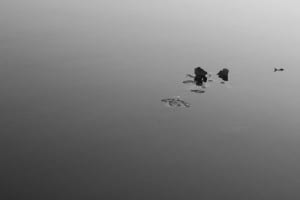 |
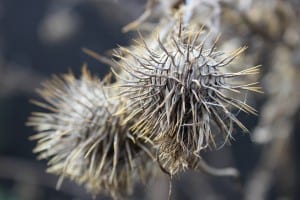 |
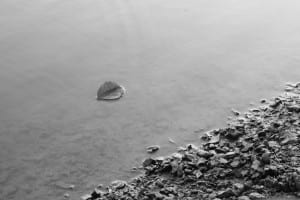 |
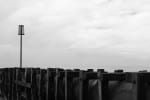 |
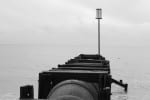 |
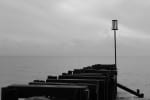 |
I then went on to look at perspectives and how they change effect of the photograph, making it more interesting. For two of my photographs I experimented with capturing them through a hole in a fence and a hole in a boat, these gave the photograph a boarder and the effect of as if someone was looking through a peephole and spying. Had I taken a normal photograph of a row of houses or the deck of a boat it wouldn’t have been nearly as effective.
I also photographed looking out onto a beach, first with the beach back grounded and the rail foregrounded. This photograph is more than it appears in two ways, first zooming in on the photograph reveals that it is more than just the top of a rail, there is actually a spider on it too and second there are two people present within the background, with the rail distracting the presence of the people (like most things in life where distractions are there to make you ignore the more important things.
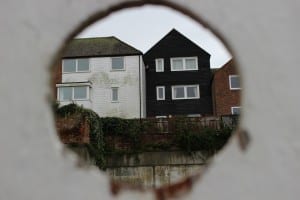 |
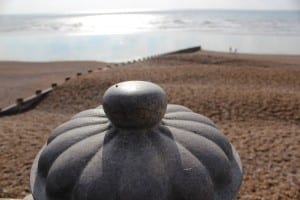 |
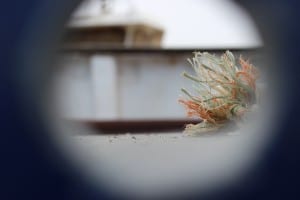 |
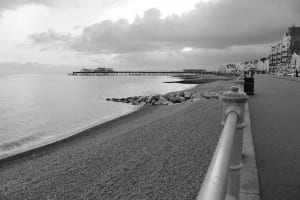 |
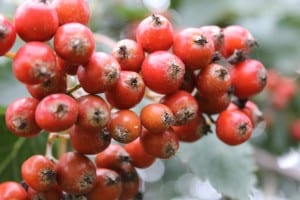 |
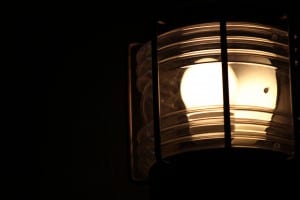 |
More Research:
Steven McPherson’s photographs of the burning books seek to challenge the potent symbolic nature of these commonplace yet powerful objects.
 |
Steven McPherson has successfully captured the process at which the two books are burning; showing the blackened edges and browned sides. The flames that surround the books are translucent which create a tranquilising effect and draws the viewer’s attention – especially with the warm yellow and orange. |
| These books appear more torn and crisped than that of the coloured photographs. Revealing more of the book’s contents, having pages open and laying torn away on their own. Applying a black and white effect has made the flames appear as one and be almost indistinguishable as to which is book and which is fire. |  |
Tom Lacoste is a French photographer whose work is primarily based on looking at fire, using dark black backgrounds (some empty some containing a specific scene) in order to keep the focus on the potent flames. Tom Lacoste’s fire photographs have a solid focus on control, having the person being the tamer of the flames rather than letting them become wild and uncontrolled. This is a rather unusual feat as fire is an element known to be uncontrollable and unforgiving.

My Response:
Influenced by Steven McPherson in my own photography I have used a variety of camera distances and angels to photograph the flames present on a burning book. The main differences between Steven McPherson’s photographs and my own being that I have focused on only one book rather than two, and used full colour photographs rather than black and white. From a distance the flames create a tranquilising effect which draws the viewers attention. At a much closer distance the flames are rather dominating, creating an on-edge, restless and impatient effect.
With the flames that are upon a red top they are uncontained, imperious and wild creating an enchanting effect; this is related back to Tom Lacoste’s fire photography of making the flames appear dominant and powerful. These photographs present an unnatural and bewildering juxtaposition of fire and water, especially as fire is not meant to be able to burn on water.
| Book on Fire |  |
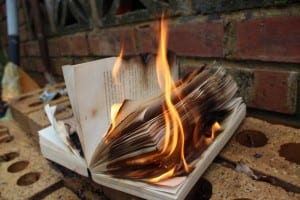 |
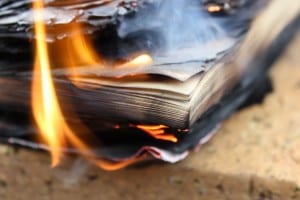 |
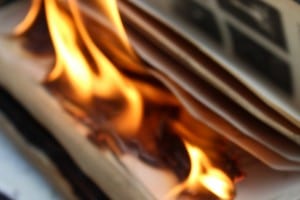 |
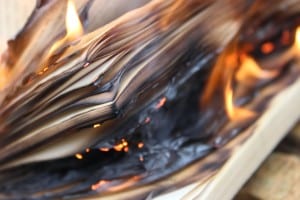 |
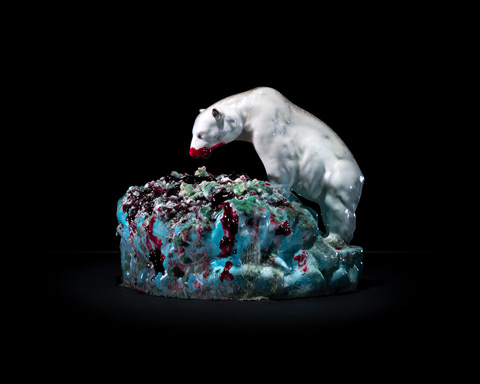

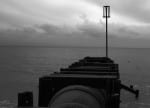

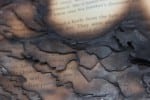
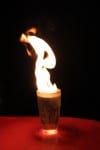
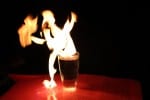
Leave a comment